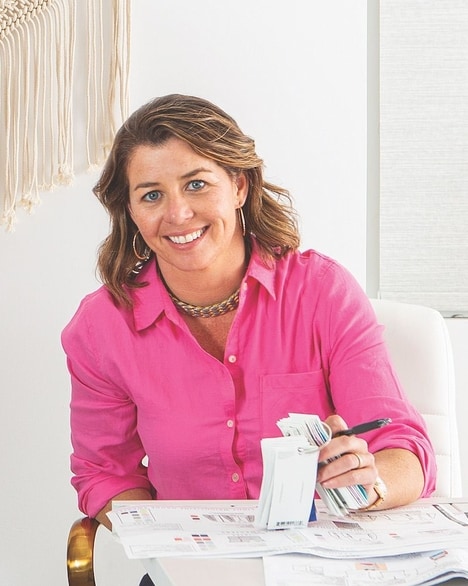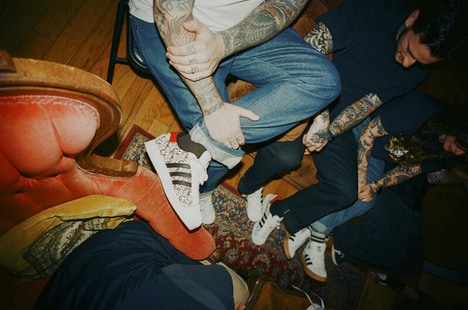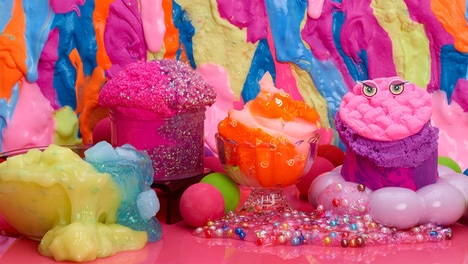Intimacy Through Innovation
An Interview with Thayer Sylvester, Co-Founder of Carve Designs



1. What does innovation mean to you in the context of sustainable fashion? How do you balance environmental responsibility with meeting customer needs?
Innovation in sustainable fashion means constantly working to reduce your environmental footprint while still creating products people genuinely want to own and wear repeatedly. Fashion, by definition, involves creating new garments—even when using recycled materials, you're still introducing something new into the environment. From a sustainability perspective, we're trying to reduce the amount of "newness" we create.
We balance this by focusing on two key areas: creating products with exceptional longevity that customers will reach for again and again before discarding, and using materials that are sustainable and made from recycled rather than virgin resources. We're actively fighting against fast fashion by designing pieces that feel both classic and trend-forward—current enough to feel relevant but timeless enough to remain in someone's wardrobe for years.
2. Your Swim Quiz has shown impressive conversion metrics. How did your team conceptualize and develop this customer-centric approach? Walk us through the ideation process.
Purchasing swimwear is one of the most intimate and vulnerable shopping experiences. Most women don't feel completely comfortable in a bathing suit—there's enormous self-doubt when you're wearing so little clothing. We're asking customers to figure out what will look good on them through a digital experience while they're already feeling uncertain.
Our challenge became: how do we get customers to a place where they have high confidence in their purchase? We realized it's not just about the product they're viewing on the page, but how they visualize themselves in that product. Rather than creating some complex 3D avatar, we focused on the emotional response—what do they feel good about showing off, what makes them nervous, how active do they want to be?
We spent extensive time mapping the emotional journey: Do I feel good about my stomach? My legs? What do I want to highlight versus hide? How will I behave in this garment? By understanding these feelings, we can make authentic product recommendations that boost confidence rather than just showcasing features.
3. Creative problem-solving often requires stepping back. Do you have specific rituals or practices for resetting creativity when tackling design or business challenges?
We have a saying in our office: "You have to slow down to go fast." It's a constant mantra that reminds us that while we're always pressuring ourselves to grow, acquire more customers, and perform better, successful innovation requires stepping back and thinking meaningfully about how we'll get there.
This philosophy means setting clear goals, holding ourselves accountable, and giving our creative team time to iterate through ideas and experiment across the spectrum of possible solutions. For the Swim Quiz, for example, we initially hoped to launch in spring 2023 with a tight timeline. We rushed through development and testing, but the results were inconsistent. We had to step back and acknowledge we needed eight more months—time for special photography shoots showing different body types, developing narrative content and video explanations. It wasn't fun to delay the launch, but it taught us that rushing innovation rarely produces the results you want.
4. The Swim Quiz implements Octane AI to drive personalization. What unexpected benefits or challenges have you encountered in adopting this technology? How has it transformed your understanding of your customer?
While we designed the quiz to help customers find their perfect fit, it became a valuable zero-party data engine that allows us to personalize the entire purchasing experience. We're using customer responses to influence all our merchandising and design decisions for future product launches. Understanding trends in preferred coverage and styling gives our merchandising team much more confidence in developing future silhouettes.
The technology completely transformed our understanding of our customer. We had assumed women had a strong sense of what they were looking for and just needed guidance, but the data revealed that many actually feel overwhelmed by choices and lack confidence in their decisions. By implementing the quiz, we shifted our role from simply selling swimwear to guiding customers on a personalized journey that builds confidence.
This insight reframed our entire approach to marketing campaigns—we changed the language across all our communications to reflect this deeper understanding of the customer experience.
5. What has been your most significant challenge when innovating within the swimwear category? Has sustainability presented unique obstacles or opportunities?
Sustainability is an ongoing obstacle that creates challenges throughout the entire product lifecycle. It took us three years to develop fabrics made entirely from recycled plastic bottles collected from landfills and oceans. Achieving the performance characteristics we needed—durability, comfort, color fastness—while using only recycled materials is extraordinarily difficult.
But the challenges extend beyond materials. In e-commerce swimwear, you're typically looking at 30-35% return rates, which creates a significant carbon footprint from shipping products back and forth and packaging waste. We're constantly working to reduce returns through better fit guidance and the Swim Quiz, ensuring customers get the right product from the start.
The third component is product lifecycle—how long does the garment last, how many times can you wear it, and what happens when you're done? We've worked hard to create high-quality garments at affordable price points that customers can wear multiple times. The piece we're still perfecting is how to take worn swimwear and recycle it into something else—we're excited to announce developments in that area soon.
6. Has there been an instance where practices from industries outside of fashion influenced an innovation at Carve Designs? How did you adapt those insights?
We've drawn significant inspiration from closed-loop manufacturing in industrial settings, particularly around recycling water and minimizing waste. All our dye houses use 100% closed-loop water systems where all water is recycled. This creates challenges around color, especially for lighter garments and whites, but we've studied how plastics are recycled in various industrial settings to better understand how to manufacture our fabrications.
Another influence comes from data-driven industries. Fashion has traditionally been less data-oriented than other sectors, but we've always been heavily focused on understanding trends through data to better design and merchandise our products. Many businesses rely much more extensively on analytics than fashion traditionally has, and we've adopted that approach.
7. Looking to the future, how will Carve Designs continue to evolve its approach to personalization and sustainability? What emerging technologies or methodologies are you exploring?
We're about to announce total closed-loop swimwear production, where customers can send us their worn swimwear to be reused and down-cycled into other materials instead of sending it to landfills. We'll incentivize this return process as part of our commitment to true circularity.
On the personalization front, we're continuing to evolve the shopping experience. We absolutely value customer privacy and independence in making choices, but we recognize our customers are busy and want personalized experiences. We're launching technology that personalizes the entire shopping journey based on preference data, helping customers find what's right for them while spending less time browsing.
The goal is always the same: reduce environmental impact while creating products and experiences that genuinely serve our customers better than anything else available.
References: carvedesigns
Featured Articles

Hyperlocal Evolution
Brands strengthen community connections through enhanced physical experiences

Artistic Retail
Retail companies team up with artists for immersive in-person events.

Sensory Retail
Immersive slime experiences transform play into multi-location experiential retail

Messy Authenticity
Brands are celebrating human imperfection and emotional authenticity

Omnichannel Acceleration
Brands diversify retail presence across digital & physical channels